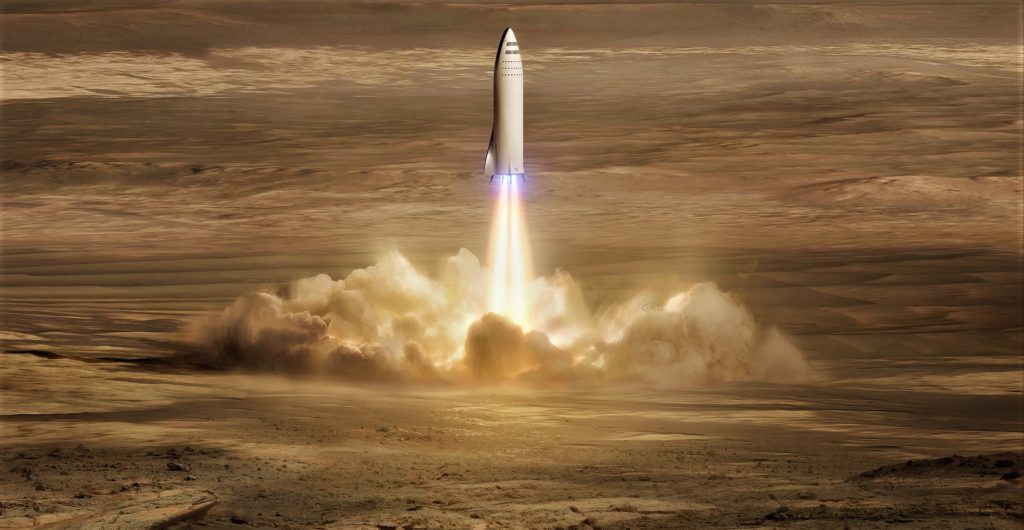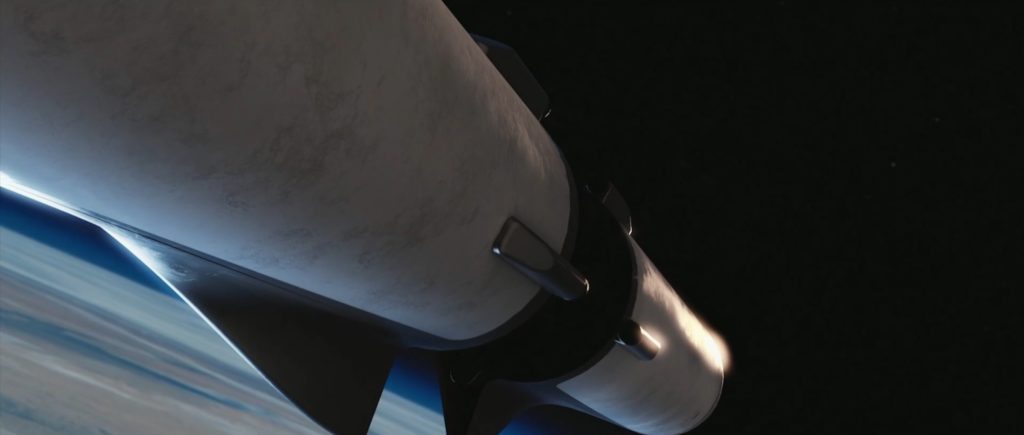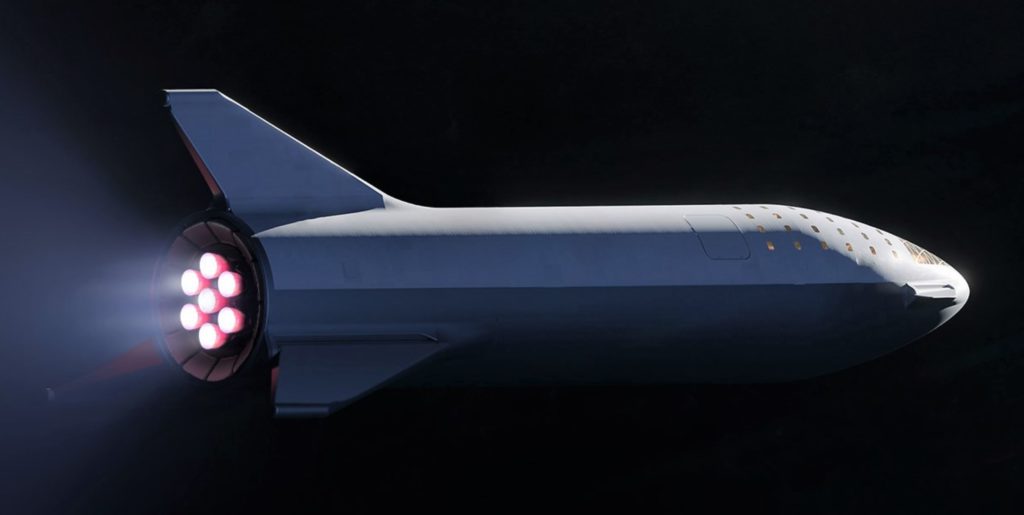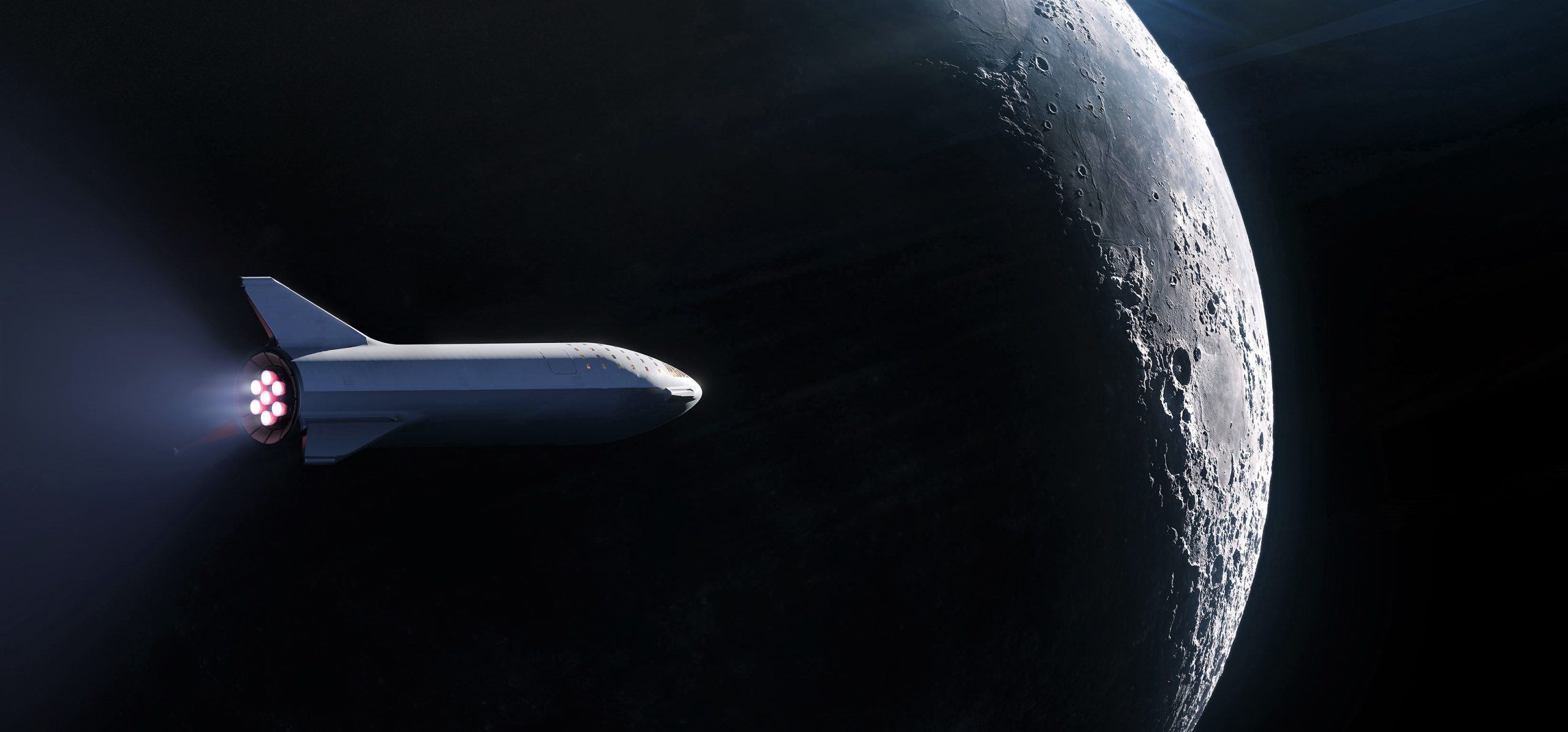
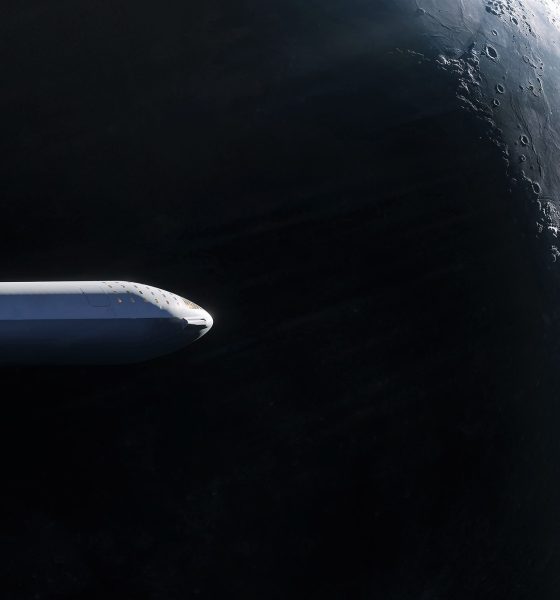
News
SpaceX has signed a private passenger for the first BFR launch around the Moon
SpaceX has officially announced that it has signed a private customer for what may be the first BFR launch to the Moon, ETA and the individual question currently undetermined.
Included with the announcement was a topical rendering that appears to show an updated BFR spaceship performing a burn of seven Raptor engines (apparently all of sea level variants) around the Moon, confirmed by CEO Elon Musk in a Twitter reply to be indicative of a new version of the next-generation SpaceX rocket.
SpaceX has signed the world’s first private passenger to fly around the Moon aboard our BFR launch vehicle—an important step toward enabling access for everyday people who dream of traveling to space. Find out who’s flying and why on Monday, September 17. pic.twitter.com/64z4rygYhk
— SpaceX (@SpaceX) September 14, 2018
Nearly overshadowing SpaceX’s intriguing lunar tourism contract, the photo included with official announcement features a BFR spaceship (BFS for short) that has rather dramatically departed from SpaceX renders of BFR and BFS dating back to late 2017 and early 2018. Most notably, the spaceship’s delta wing has been removed in its entirety, replaced by a triangular layout of three fins and what appear to be forward canards (control surfaces most commonly used to improve aerodynamic stability). Those apparent canards could also potentially act as a sort of stand in to the grid fins present on both BFR and Falcon boosters.
This new render also implies a logical relocation of the ship’s landing legs from external pods to the tips of its new wings, and may even betray some sort of hinge mechanism on the bottom two wins, perhaps meant to allow BFS to safely land on its trio of wingtips while still preserving the inherent aerodynamic stability of BFR 2017’s delta-wing.
- SpaceX’s 2017 BFR looks far different that the vehicle shown in the company’s updated 2018 render. (SpaceX)
- Note the 2017/early-2018 variant’s single delta-wing and extendable leg pods (silver). (SpaceX)
- A September 2018 render of Starship (then BFS) shows one of the vehicle’s two hinged wings/fins/legs. (SpaceX)
Finally, the most significant change is found at the spaceship’s rear, where a new configuration of seven Raptor engines – by all appearances the version of the engine optimized for sea level performance – is surrounded by a mysterious ring of white or grey panels, perhaps a form of heat-shielding or maybe something else entirely. The lack of vacuum-optimized Raptors is arguably the most surprising feature of this unexpected announcement, either pointing to some sort of brash ‘artistic license’ (less likely given Musk’s tweet response) or a drastic departure from traditional rocket design, doing away with expanded vacuum nozzles for some more exotic solution.
A mystery hitchhiker
Musk also cryptically responded to a Tweet implying he was probably the mystery passenger, posting a Japanese flag emoji that strongly points towards Softbank founder and CEO Masayoshi Son as the prime candidate for this (circum?)lunar launch. Through his influential Softbank Vision Fund (SVF), essentially a $100 billion pool of money that is being gradually invested in certain companies and ideas, Masayoshi Son has become a force to be reckoned with in technology industries, and is believed to have invested a staggering $1.5 billion alone in prospective satellite internet constellation OneWeb.
Yes
— Elon Musk (@elonmusk) September 14, 2018
As such, it would be far from surprising if Masayoshi Son – who purchased a ~$120 million Californian mansion in 2013 – has chosen to purchase one (or perhaps the only) seat aboard a circumlunar launch of SpaceX’s BFR booster and spaceship, an appreciable risk of life and limb that could cost on the order of $100 million – plus or minus $50 million – depending on how SpaceX is approaching this development. More likely than not, this proposed BFR launch is a slight modification of an already-planned experimental test flight, one that SpaceX has apparently found ways to partially subsidize thanks to an eccentric private individual or group interested in hitchhiking (at a cost).
Time will tell, and SpaceX is planning a much more detailed announcement – evidenced by a livestream event posted on the company’s website – around 6pm PDT on Monday, September 17th. With a little luck, this could be Elon Musk’s previously mentioned BFR update mixed with an unexpected space tourism launch contract.
For prompt updates, on-the-ground perspectives, and unique glimpses of SpaceX’s rocket recovery fleet check out our brand new LaunchPad and LandingZone newsletters!

News
Tesla FSD fleet is nearing 7 billion total miles, including 2.5 billion city miles
As can be seen on Tesla’s official FSD webpage, vehicles equipped with the system have now navigated over 6.99 billion miles.

Tesla’s Full Self-Driving (Supervised) fleet is closing in on almost 7 billion total miles driven, as per data posted by the company on its official FSD webpage.
These figures hint at the massive scale of data fueling Tesla’s rapid FSD improvements, which have been quite notable as of late.
FSD mileage milestones
As can be seen on Tesla’s official FSD webpage, vehicles equipped with the system have now navigated over 6.99 billion miles. Tesla owner and avid FSD tester Whole Mars Catalog also shared a screenshot indicating that from the nearly 7 billion miles traveled by the FSD fleet, more than 2.5 billion miles were driven inside cities.
City miles are particularly valuable for complex urban scenarios like unprotected turns, pedestrian interactions, and traffic lights. This is also the difference-maker for FSD, as only complex solutions, such as Waymo’s self-driving taxis, operate similarly on inner-city streets. And even then, incidents such as the San Francisco blackouts have proven challenging for sensor-rich vehicles like Waymos.
Tesla’s data edge
Tesla has a number of advantages in the autonomous vehicle sector, one of which is the size of its fleet and the number of vehicles training FSD on real-world roads. Tesla’s nearly 7 billion FSD miles then allow the company to roll out updates that make its vehicles behave like they are being driven by experienced drivers, even if they are operating on their own.
So notable are Tesla’s improvements to FSD that NVIDIA Director of Robotics Jim Fan, after experiencing FSD v14, noted that the system is the first AI that passes what he described as a “Physical Turing Test.”
“Despite knowing exactly how robot learning works, I still find it magical watching the steering wheel turn by itself. First it feels surreal, next it becomes routine. Then, like the smartphone, taking it away actively hurts. This is how humanity gets rewired and glued to god-like technologies,” Fan wrote in a post on X.
News
Tesla starts showing how FSD will change lives in Europe
Local officials tested the system on narrow country roads and were impressed by FSD’s smooth, human-like driving, with some calling the service a game-changer for everyday life in areas that are far from urban centers.

Tesla has launched Europe’s first public shuttle service using Full Self-Driving (Supervised) in the rural Eifelkreis Bitburg-Prüm region of Germany, demonstrating how the technology can restore independence and mobility for people who struggle with limited transport options.
Local officials tested the system on narrow country roads and were impressed by FSD’s smooth, human-like driving, with some calling the service a game-changer for everyday life in areas that are far from urban centers.
Officials see real impact on rural residents
Arzfeld Mayor Johannes Kuhl and District Administrator Andreas Kruppert personally tested the Tesla shuttle service. This allowed them to see just how well FSD navigated winding lanes and rural roads confidently. Kruppert said, “Autonomous driving sounds like science fiction to many, but we simply see here that it works totally well in rural regions too.” Kuhl, for his part, also noted that FSD “feels like a very experienced driver.”
The pilot complements the area’s “Citizen Bus” program, which provides on-demand rides for elderly residents who can no longer drive themselves. Tesla Europe shared a video of a demonstration of the service, highlighting how FSD gives people their freedom back, even in places where public transport is not as prevalent.
What the Ministry for Economic Affairs and Transport says
Rhineland-Palatinate’s Minister Daniela Schmitt supported the project, praising the collaboration that made this “first of its kind in Europe” possible. As per the ministry, the rural rollout for the service shows FSD’s potential beyond major cities, and it delivers tangible benefits like grocery runs, doctor visits, and social connections for isolated residents.
“Reliable and flexible mobility is especially vital in rural areas. With the launch of a shuttle service using self-driving vehicles (FSD supervised) by Tesla in the Eifelkreis Bitburg-Prüm, an innovative pilot project is now getting underway that complements local community bus services. It is the first project of its kind in Europe.
“The result is a real gain for rural mobility: greater accessibility, more flexibility and tangible benefits for everyday life. A strong signal for innovation, cooperation and future-oriented mobility beyond urban centers,” the ministry wrote in a LinkedIn post.
News
Tesla China quietly posts Robotaxi-related job listing
Tesla China is currently seeking a Low Voltage Electrical Engineer to work on circuit board design for the company’s autonomous vehicles.

Tesla has posted a new job listing in Shanghai explicitly tied to its Robotaxi program, fueling speculation that the company is preparing to launch its dedicated autonomous ride-hailing service in China.
As noted in the listing, Tesla China is currently seeking a Low Voltage Electrical Engineer to work on circuit board design for the company’s autonomous vehicles.
Robotaxi-specific role
The listing, which was shared on social media platform X by industry watcher @tslaming, suggested that Tesla China is looking to fill the role urgently. The job listing itself specifically mentions that the person hired for the role will be working on the Low Voltage Hardware team, which would design the circuit boards that would serve as the nervous system of the Robotaxi.
Key tasks for the role, as indicated in the job listing, include collaboration with PCB layout, firmware, mechanical, program management, and validation teams, among other responsibilities. The role is based in Shanghai.
China Robotaxi launch
China represents a massive potential market for robotaxis, with its dense urban centers and supportive policies in select cities. Tesla has limited permission to roll out FSD in the country, though despite this, its vehicles have been hailed as among the best in the market when it comes to autonomous features. So far, at least, it appears that China supports Tesla’s FSD and Robotaxi rollout.
This was hinted at in November, when Tesla brought the Cybercab to the 8th China International Import Expo (CIIE) in Shanghai, marking the first time that the autonomous two-seater was brought to the Asia-Pacific region. The vehicle, despite not having a release date in China, received a significant amount of interest among the event’s attendees.
